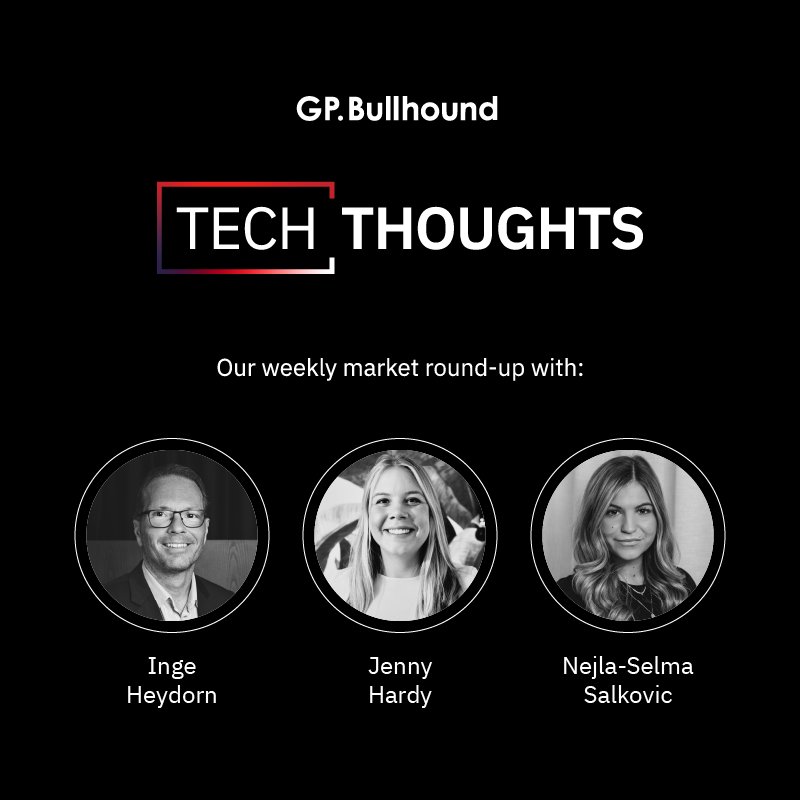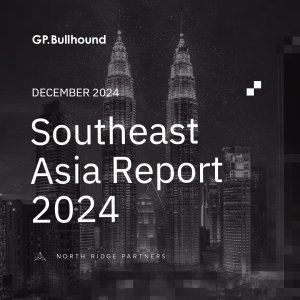Tech Thoughts Newsletter – 8 September 2023.

Market: September is always a volatile month in the market. This week was no different, with weak German economic data and weakening trade data from China, contrasting with stronger US data, which in turn drove expectations that rates would stay higher for longer. The worst of all worlds. On top of that, there is news of further tension between China and the US, as Apple iPhones were banned from being used by government workers in China.
Portfolio: No major changes in the portfolio this week – we added to our semicap exposure on weakness.
US and China – semis getting political again
- Chinese government agencies have barred staff from using iPhones and other foreign devices. There’s still a lot we don’t know and lots of variations in the story that’s being reported.
- Firstly, we think there was already an iPhone ban in place for some government officials, so it’s not clear how much wider this request has gone – this week, there have also been rumours that it might extend to state-owned companies, while the South China Morning Post spoke to a “handful” of Chinese ministries, perhaps implying a lower level of fallout, and that government employees could still use iPhones outside of work.
- It fuels broader concerns of whether there might be a push to “buy local,” which has hit foreign brands in China before (Nike and Adidas in 2021 after controversy around those companies’ responses towards cotton sourcing).
- We commented last week on Huawei’s Mate 60 release, bringing back into focus the ways in which China might be circumventing the US restrictions (given Huawei was added to the US entity list back in 2019).
- This attracted more scrutiny this week as, unsurprisingly, US lawmakers briefed the US embassy to the effect that SMIC probably had violated US sanctions by providing components to Huawei, given 7nm chips must be made with US tools. The rules dictate that any company that intends to supply Huawei with US technology, which SMIC does, requires a US licence, and it’s unclear whether SMIC has this (we assume not). SK Hynix is also in the mix, as it was revealed the Mate Pro uses their memory chips (apparently without Hynix being aware).
Portfolio view: Apple (owned) is clearly vulnerable to further China restrictions. It is perhaps not a coincidence that the Huawei scrutiny and the Apple ban are happening together, with China using the iPhone ban as a weapon against the SMIC/Huawei response. The big question is still the extent to which the restrictions become broader or if China influences its consumers to reject Apple in favour of local brands. The reality is that Apple is one of the most “made in China” brands out there. The interdependency between Apple and China is not to be underestimated, and is one of the factors that could ultimately lead to the situation being diffused. China is Apple’s biggest market, but Apple is also indirectly one of China’s biggest employers (via Foxconn).
We don’t own memory or SMIC, so we have limited direct exposure to the US licensing issues that might arise with Huawei’s latest launch. The fact that SMIC (or “China”) have been able to build 7nm chips without EUV is impressive, but two important points to make: firstly, it is unlikely that they could get beyond/below 7nm without EUV (which they cannot access); secondly, it is very unlikely that the 7nm chips they’re producing make any economic sense – it is very likely with that amount of multiple patterning, that the yields will be low, time-consuming and costly. It makes competing on a global scale unlikely.
Semis leadership race continues – Intel vs TSMC. Good news for ASML
- It’s been conference season in tech this week, and as a team, we’ve read and listened to over 50 transcripts from tech companies across semis and software.
- Broadly, semiconductor companies have been reiterating what was said on recent earnings calls: better inventory situations, bottoming PC market, and still negative on China demand.
- Intel was perhaps the most interesting – it said its Q3 was tracking ahead of company guidance, with the biggest driver of upside the datacentre segment, in particular Intel’s Sapphire product, which is seeing “some benefit” from AI workloads.
- The other big news was on Intel’s foundry business, where they announced that they had received a down payment from a “whale” customer. It’s important because it means that our expectation for Intel’s Arizona fab to ramp its 18A (broadly equivalent to TSMC 3nm) is brought forward to the end of 2024 (versus prior expectations of 2025).
- 18A will be using ASML’s latest EUV machines, High NA, which are capable of more accurate lithography. TSMC will also use High NA for its N2 technology. The latest update from them was in January, where they guided N2 to reach risk production in 2024 and volume production in 2025.
- Also this week, ASML (owned) CEO Peter Wennink said that it is on track to have its latest High NA tools available this year. High NA tools will cost over €300m, and will help to drive EUV-related revenue to the highest proportion of tools revenue next year.
Portfolio view: Intel’s return to leading-edge manufacturing depends on building leading-edge fabs and adopting EUV/High NA – already in ASML’s order books. It has only a handful of EUV machines in production. For context, we think (as a rough estimate) TSMC has about 100 tools in production. That’s an extraordinary level of catch-up required – and we believe Intel will be a significant driver of orders for ASML over the next two to three years. Intel is forced to invest to catch up for the last 10 years of underinvestment – we are sceptical as to whether it will succeed. Still, we will continue to benefit from it trying, through ASML and other semicap equipment names that we own in the portfolio. It also means that TSMC will be forced to keep investing in order not to fall behind. The leadership race is a big part of what drives our structural solid view on the sector.
Semicap resilience – and cycle bottoming
- KLA (owned) upped its dividend this week and announced a new $2bn buyback, with a comment from the CEO effectively reiterating their long-term targets and positive industry outlook.
- LAM Research (owned) also commented both that H2 should be higher than H1, and that the strong demand in China is sustainable into 2024.
Portfolio view: Semicap earnings resilience in the current spend-down cycle has been impressive. Despite the memory weakness feeding through to lower revenues, all of our semicap holdings have continued to generate strong FCF and strong margins. Their ability to execute cost control and cash generation in the face of an industry downturn is impressive.
We’ve commented before that the advantage tech has (at least the tech businesses we own) is typically high gross margins, which give it the ability to flexibly manage its cost base – the fact that we’re seeing that in one of the most historically cyclical parts of tech (semicap equipment) is quite extraordinary.
Investing in the right part of the AI value chain
- C3.ai (not owned) is a business which has attracted a lot of attention this year, but its results and guidance were disappointing – the company reported just 10% yr/yr growth and withdrew its profit guidance for the year.
Portfolio view: There is no doubt that companies are spending on AI, but right now it feels like the industry-specific solutions that c3.ai is offering are being slow to be adopted. Initially, for enterprise software customers, we believe it makes more sense to get AI capabilities via their existing platform software providers initially, rather than to initiate a new software relationship with a new provider. That’s not to say that industry-specific solutions won’t be adopted in time, but it’s still early days and visibility is low. We continue to prefer to be exposed to AI software spend via the best-in-class platform players who are all initiating pricing for AI features that we think can contribute materially to ARPU growth (we own Microsoft, ServiceNow, Salesforce, Adobe and Workday).
China auto strength
- BYD, the world’s largest electric vehicle manufacturer, reported another great August monthly shipments number, BEVs up 76% yr/yr.
- China’s EV penetration is set to reach close to 40% by year-end – the market has seen extraordinary growth helped by continued subsidies.
Portfolio view: The EV shift and the increased semiconductor requirements in EV continue to be a key exposure in the portfolio for us – we own Infineon and NXP, both of whom sell into BYD.

For enquiries, please contact:
Inge Heydorn, Partner, at inge.heydorn@gpbullhound.com
Jenny Hardy, Portfolio Manager, at jenny.hardy@gpbullhound.com
Nejla-Selma Salkovic, Analyst, at nejla-selma.salkovic@gpbullhound.com
About GP Bullhound
GP Bullhound is a leading technology advisory and investment firm, providing transaction advice and capital to the world’s best entrepreneurs and founders. Founded in 1999 in London and Menlo Park, the firm today has 14 offices spanning Europe, the US and Asia.



